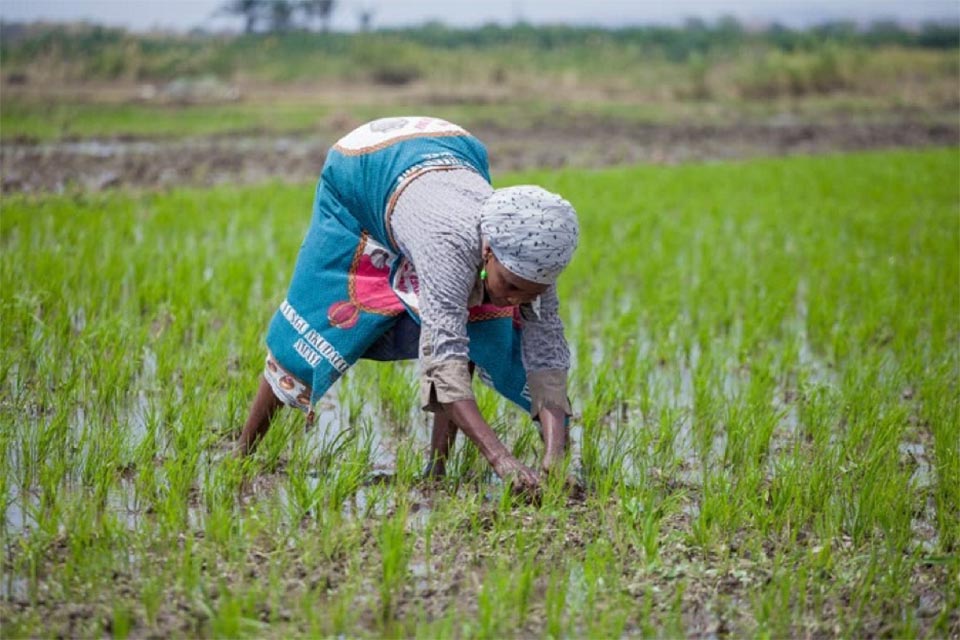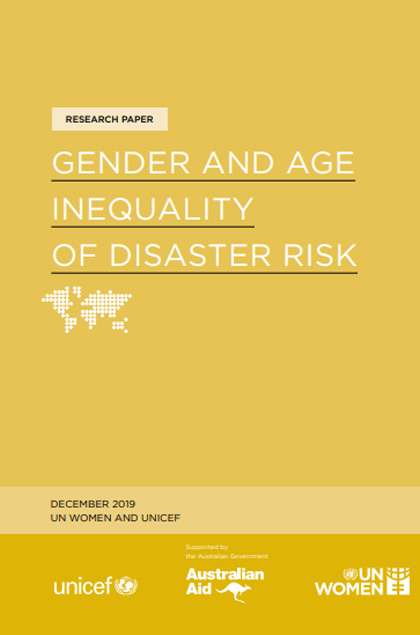The gender and age dimensions of floods and drought in Malawi
Understanding the gender and age inequalities of risk

Mortality and numbers affected
In the floods in 2015, 278 people were killed, 15 out of 28 districts declared a state of disaster, and 230,000 people displaced. 56 percent of those displaced were female (compared to 51 percent of the overall population) and 55 percent were under 18 (compared to 51 percent of the population). 2.5 percent of the displaced population were pregnant women, and 5.9 percent were breastfeeding mothers. 4.6 percent of the displaced population were single women who were heads of their household.
In 2019, 60 people were killed as a result of Cyclone Idai and 672 people injured. 868,900 people were affected overall, with 76,831 people displaced. Of those displaced, 59 percent were female, and 58 percent were under 18. 5,136 pregnant and lactating women were affected. 11 percent of 866 affected households in the four worst-hit districts were headed by single women, compared to 3 percent headed by single men.
Interviews identified ways in which gender norms affected women’s vulnerability to the floods including access to warning information about disasters. In Malawi, these are often shared by radio or mobile phones, limiting access for women, as men tend to control these items. Men also tend to be considered household decision-makers, which can put women at risk. In some cases, women remain at home even when flood water reaches dangerous levels, because their husbands have decided not to evacuate, or women have decided to wait for their husband to return before leaving. Despite this, in many cases it is women who are more likely to be at home when floods occur, meaning they take on the responsibility for evacuating their family to safety.
Unequal livelihood impacts
90 percent of women (and 80 percent of men) are engaged in agriculture, a sector that accounts for one third of Malawi’s GDP. Agriculture in Malawi is extremely vulnerable to the impacts of hazards; floods cause average annual GDP losses of 1.43 percent. There is some evidence that women farmers lost 44 percent more acres of agricultural land than their male counterparts.
Women’s livelihoods in Malawi are less resilient than men’s, with female-headed households particularly vulnerable to being pushed further into poverty by disasters. Poverty in Malawi is gendered, with women earning an estimated 50 percent and 71 percent of what men earn in the informal economy and from smallholder agriculture respectively.
Women’s low resilience is attributable to a number of factors explored in research including limited access to resources (draught animals, mechanised transport) and assets including a lack of land ownership. Limited assets and limited capital to invest in inputs, result in a productivity gap of 25 percent between men and women. Even in non-emergency periods, women report having to sell their goods at a lower price than men, and some women cannot travel to market because of gendered social norms restricting women’s mobility.
Those with lower incomes and less social capital reported being unable to recover their livelihoods after a disruption; they were often pushed into negative coping strategies. As one trans woman told us:
Gender-based violence
Larger scale surveys noted 10 percent of women reporting feeling unsafe in shelters after the 2015 floods, although reporting of gender-based violence (GBV) is likely to be underestimated. The prevalence of GBV in Malawi (41 percent of women reported experiencing physical or sexual violence in 2011 ) and evidence from other disasters, suggests that GBV rates were likely higher after the 2015 and 2019 events.
Young women are also vulnerable to human traffickers in the aftermath of disasters and are sometimes trafficked into cities to work in the sex trade. Some are trafficked internationally, to Zambia and South Africa. Boys are also trafficked, often into commercial farms in Zambia and Malawi. There is an expectation on them to provide for their families. Large families, with extensive caring responsibilities, may encourage young women to accept these ‘opportunities’ in order to ease the household burden.
Unequal drought impacts
The impacts of the 2015 floods and Cyclone Idai on women and children in Malawi occurred within the context of frequent and recurring drought conditions. From examining data and insights into the differentiated impact of drought on the population of Malawi, it is possible to infer the likely differentiated impact of floods, assuming similar impacts, and also understand the longer term, underlying context in which the floods occurred.
Agriculture in Malawi is extremely vulnerable to the impacts of hazards; droughts cause average annual GDP losses of 2.02 percent. As noted, women’s livelihoods in Malawi are based around agriculture, therefore drought impacts on agricultural productivity can have significant impacts on livelihood, food security and malnutrition particularly for women and children.
A 19 year old woman told us how lack of access to land and unemployment, and living without her parents (who had emigrated in search of work), meant she went hungry during drought:
HIV-affected households are significantly more vulnerable to food insecurity (and HIV/AIDS prevalence is higher among women). In the 2001/2 drought, 92 percent of HIV-affected households were food insecure compared to 47 percent of non-HIV affected households.
Previous research has also found that, following floods and droughts, the workload of gendered tasks increases for women, with women having heavier burdens of collecting water and firewood, caring for young, elderly and sick relatives, and fetching and preparing food.
This also has a subsequent impact on girls’ education. From 2008 to 2014, 53 percent of students dropping out of primary school were girls, with a correlation between rates of girls dropping out of school and number of people affected by floods and droughts.
In summary, the case study highlights the ways women and girls are disproportionately impacted by repeat flooding and drought in Malawi, exacerbated by pre-disaster inequalities in roles, access to resources, assets, technology, and information.
This case study, was one of three collected as part of a research paper: “Gender and age inequality of disaster risk” – prepared by UN Women and UNICEF
